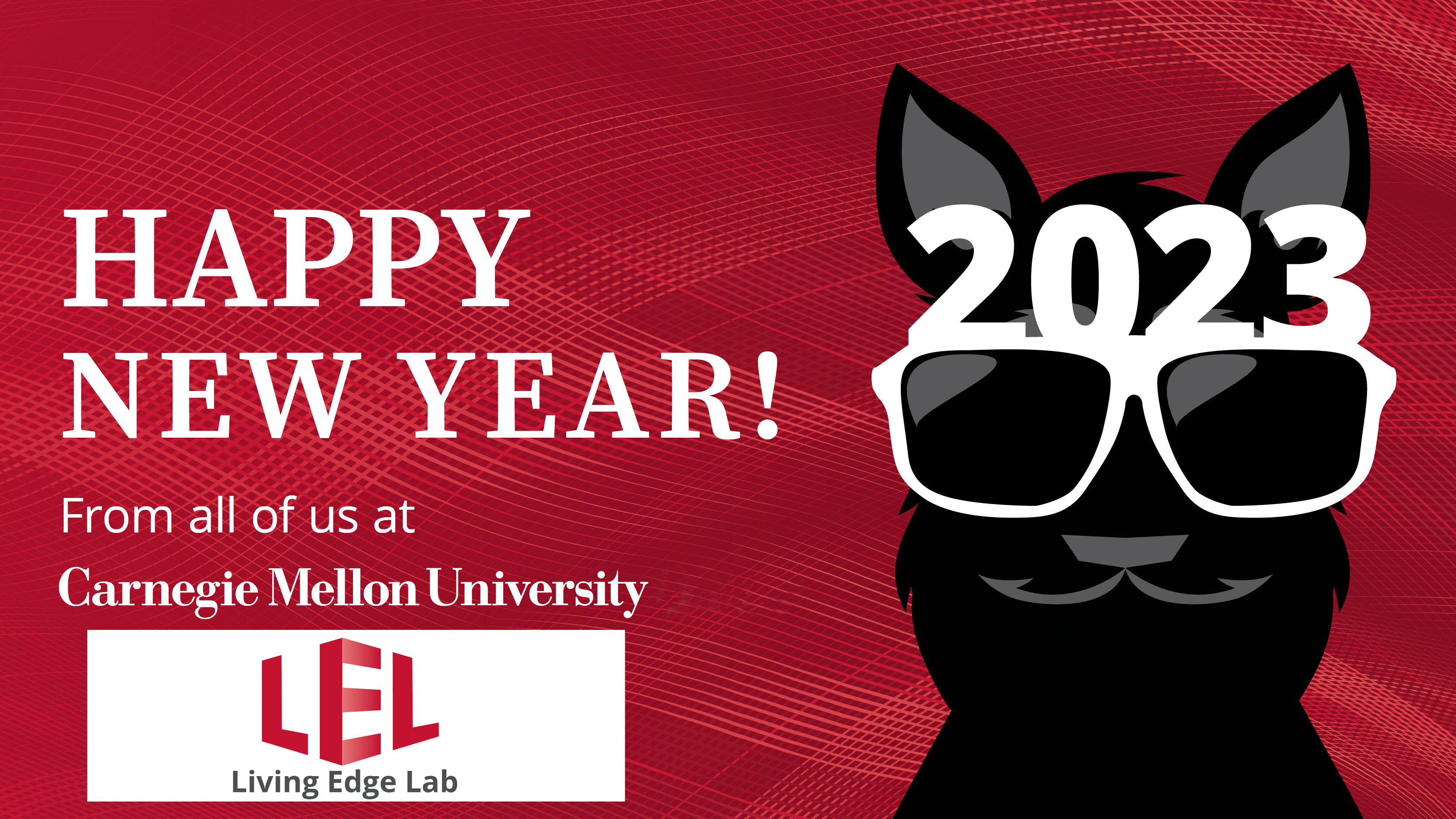
Living Edge Lab Year-End 2022 Message
Dear Members of the Living Edge Lab community,
Since the Open Edge Computing Initiative valedictory event in May, our communication with you has been primarily through the LEL LinkedIn page and the CMU LEL website. As we near the end of 2022, we'd like to take this opportunity to wish you and your families a joyous holiday season and a wonderful new year in 2023. We'd also like to take a moment to provide you an update on LEL activities, and a preview of what's coming next year.
It is gratifying to see the accelerating broad adoption of edge computing and its synergy with deployment of 5G technologies. Virtually every corner of the industry today refers to edge computing. Private and public infrastructure deployments are growing rapidly, in no small part due to the contributions of this community. The pioneering role of this community was highlighted in June 2022 by ACM SIGMOBILE's Test of Time award for our seminal 2009 paper, "The Case for VM-based Cloudlets in Mobile Computing".
But, we have not been resting on our laurels. Throughout 2022, we continued to advance the frontier of edge computing through our work on edge-native applications, edge orchestration, and edge compute and network infrastructure.
In edge-native applications, we continued a focus on wearable cognitive assistance (WCA). Deloitte highlighted the future productivity impact of WCA in a white paper. We built several new WCA applications, as well as tools like tinyHulk to accelerate the creation of WCA applications. Our drone work has started to bear fruit, with Mega-Nerf for large scale 3D-Visualization and edge-based drone video analytics. We have also continued our work in bringing legacy applications to the edge with an extensive EdgeVDI collaboration with VMware and Olive2022, an edge-native capability for running applications that are no longer runnable on modern hardware or operating systems. Our collaboration with Meta Reality Labs led to the “Media Composition on the Edge” student project to create an edge-based real-time video creation application that uses gestures to automatically create effects and clips for social media posts. We introduced the new concept of a "Silent Witness" that leverages edge computing and storage to strike a new balance between privacy and surveillance-based security. Finally, drawing from the Covid experience, we published a forward-looking piece, "Balancing Privacy and Serendipity in Cyberspace", that speculates on how edge computing could enable serendipitous interactions among remote workers.
We've significantly expanded our work in edge orchestration through the Sinfonia project in collaboration with Meta and ARM which allows an edge-native application to select an optimal cloudlet without any specific knowledge of the edge infrastructure itself.
Following on our VM-centric Nephele project for edge application migration, we sponsored the “Follow Me and Don’t Forget” student project to build a framework for application-aware edge migration for stateful WCA applications.
In edge and network infrastructure, we published work with InterDigital on the use of emulation for simulating edge infrastructure. We also published our results on network latency segmentation in our LEL CBRS 4G LTE network.
In our collaboration with ARM, we launched a new effort on the concept of a "Just-in-Time Cloudlet". Think of this as hyper-converged infrastructure for the edge, in which can you integrate the entire RAN, core and edge-native application in a single server for applications like drone-based search and rescue in remote areas with poor coverage. To further explore open and open-source wireless networks, we deployed the Magma EPC as our primary EPC in the LEL network. Next year, we hope to move to a 5G architecture and begin work on OpenRAN infrastructure.
In 2023, we will continue to focus on these areas and projects while still responding to emerging technical and commercial edge computing challenges. As always, we see great value in collaborating with our colleagues in industry and welcome ideas, suggestions, and opportunities to work together to advance edge computing.
Once again, here's wishing you and yours a fantastic 2023!
--- Satya, Jim and Rolf